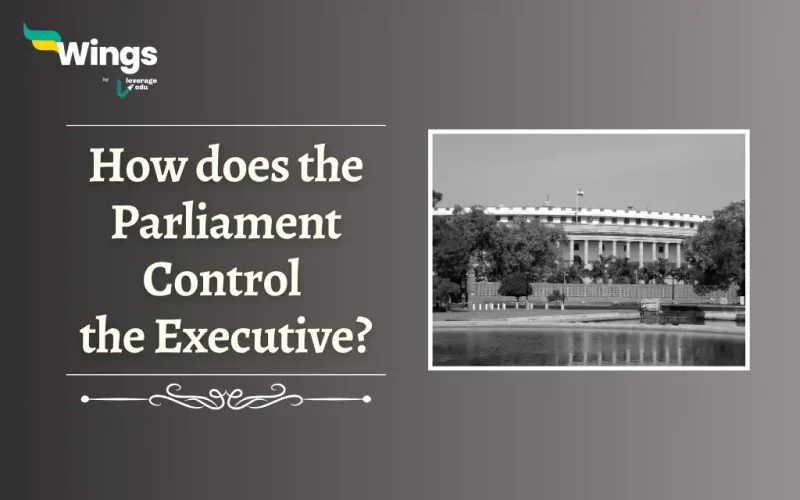In a democratic setup, the Parliament of India must control the Executive to maintain governance and guarantee accountability and checks on the Government. Through the Constitution of India, the Executive is answerable to the Parliament for its policies and acts. Moreover, via Question-hour, Zero-hour, Half-an-hour discussion, Calling attention, Short-duration discussions, Attention motion, No-confidence motion, Censure motion, and many other kinds of discussions. Furthermore, another way is by different Committees of the Parliament like Government Assurance, Committee on Subordinate Legislation, and Committee on Petitions, which keep a check on the executive. In this blog, we will uncover how the Parliament controls the Executive.
Also Read- 8 Types of Motions That Are Carried Out In The Parliament
Parliamentary Control Over the Executive
Table of Contents
In India’s Parliamentary Democracy, the Council of Ministers (executive) is answerable to the Parliament, especially the lower house i.e., the Lok Sabha.
- This principle, known as Collective Responsibility, ensures that ministers answer for the Government’s actions and that the powers given to them stay in check.
- Parliament uses a toolbox of mechanisms to enforce this accountability.
- Lawmakers can debate and discuss government policies, hence exposing any flaws.
- Moreover, they can also bring a No-confidence motion, which could force the Executive to resign if passed.
- Financial control is another tool how the Parliament controls the Executive. Parliament approves Government spending through the Appropriation Bill.
- Additionally, the Public Accounts Committee reviews how funds are used, and lawmakers can even propose cuts to spending.
- Parliament also exerts control over legislation. Committees scrutinize proposed laws, and both Houses must approve Ordinances (temporary laws) before they become permanent.
- Finally, Question Hour and Zero Hour allow Members of Parliament to question ministers about government affairs directly. Moreover, this ensures transparency and keeps the Executive on its toes.
Also Read: Difference between a Financial Bill and a Money Bill
Related Blogs
FAQs
The Parliament exercises control over the Executive through question-hour, zero-hour, half-an-hour discussions, short-duration discussions, calling attention motions, adjournment motions, no-confidence motions, censure motions, and other discussions.
Their key tool to keep a check on the executive is the ‘No-Confidence’ motion. The no-confidence motion is an effective tool for keeping a check on the executive. Furthermore, there are multiple ways through which this control can be exercised.
Executive power of the Union is vested in the President and is exercised by him either directly or through officers subordinate to him by the Constitution.
This is everything about how does the Parliament controls the Executive. Moreover, you may even read more blogs and empower yourself with knowledge regarding Civics and Polity!
 One app for all your study abroad needs
One app for all your study abroad needs













